When Emotion Wears Carbon, and History Drives Forward
When the lights go down and the crowd hushes, there’s that moment—an engine note rolling low, carbon fibre shimmering beneath halogen and LED spots, design lines slicing air like a scalpel. That’s exactly what the 8C-R Tazio evokes: a long-haired dream of Italian racing heritage, reborn. Conceptualised in 2020 by one-time VW/Genesis designer Arseny Kostromin and slotted into the legacy of the milanese marque’s glorious past, it doesn’t merely whisper “manual gear-change, corridors of power” — it yells it. The name “Tazio” itself is an homage to legendary driver Tazio Nuvolari, which sets the tone: this machine doesn’t just move, it roars and romps, half-racing prototype, half-road car fantasy.

In that opening moment you sense the lineage: from the 8C road cars of old, the racing 8C’s of Mille Miglia fame, through the “meccanica delle emozioni” ethos of the brand. The 8C-R Tazio dresses up in that tradition but with modern guts: this is hypercar territory for a brand that once produced elegant 2-door coupés, then drifted into mass-market sedans. And now, here it is: a concept with serious intentions. That first instant of ignition — you expect the crackle, the intake scoops inhaling, and the car stooping in readiness like a cougar before the leap.
The story begins with Alfa Romeo’s rich motorsport DNA, and the desire to channel it into something future-focused. Though not an official production car, the 8C-R Tazio concept was revealed in 2020, penned by Arseny Kostromin, previously involved with Genesis and VW design programmes. The context: Alfa had been absent from the true hypercar conversations for decades; the marque’s last high-performance halo cars (such as the 8C Competizione) were limited-run, charming but not exactly forging new horizons. Meanwhile, the LMDh/Hypercar classes were beckoning, and design houses were speculating about how Alfa might re-enter with fire and flair.

The “R” in 8C-R evokes racing heritage—R for “Racing” or “Rebirth” depending on how romantic you feel. Tazio—the driver of myth and legend—links past to future. It was never necessarily destined for series production, but rather as a statement piece: if Alfa wanted to show the world “this is what we could do” it might well begin here. The monocoque architecture, V12 aspirations, pure rear-wheel-drive layout: all scream “halo project”. And as such, it plants a flag.
What makes the 8C-R Tazio feel legendary isn’t its racing record (it doesn’t have a dozen Le Mans wins) but its ties to legends and the “what-if” aura. Consider Nuvolari—the man whose name it bears—winning on the edge, daring the impossible, swirling through curves with car and courage in perfect sync. Alfa’s own historic 8C racers of the 1930s and 1940s did battle in Mille Miglia, Le Mans, Targa Florio. That spirit is latent here.
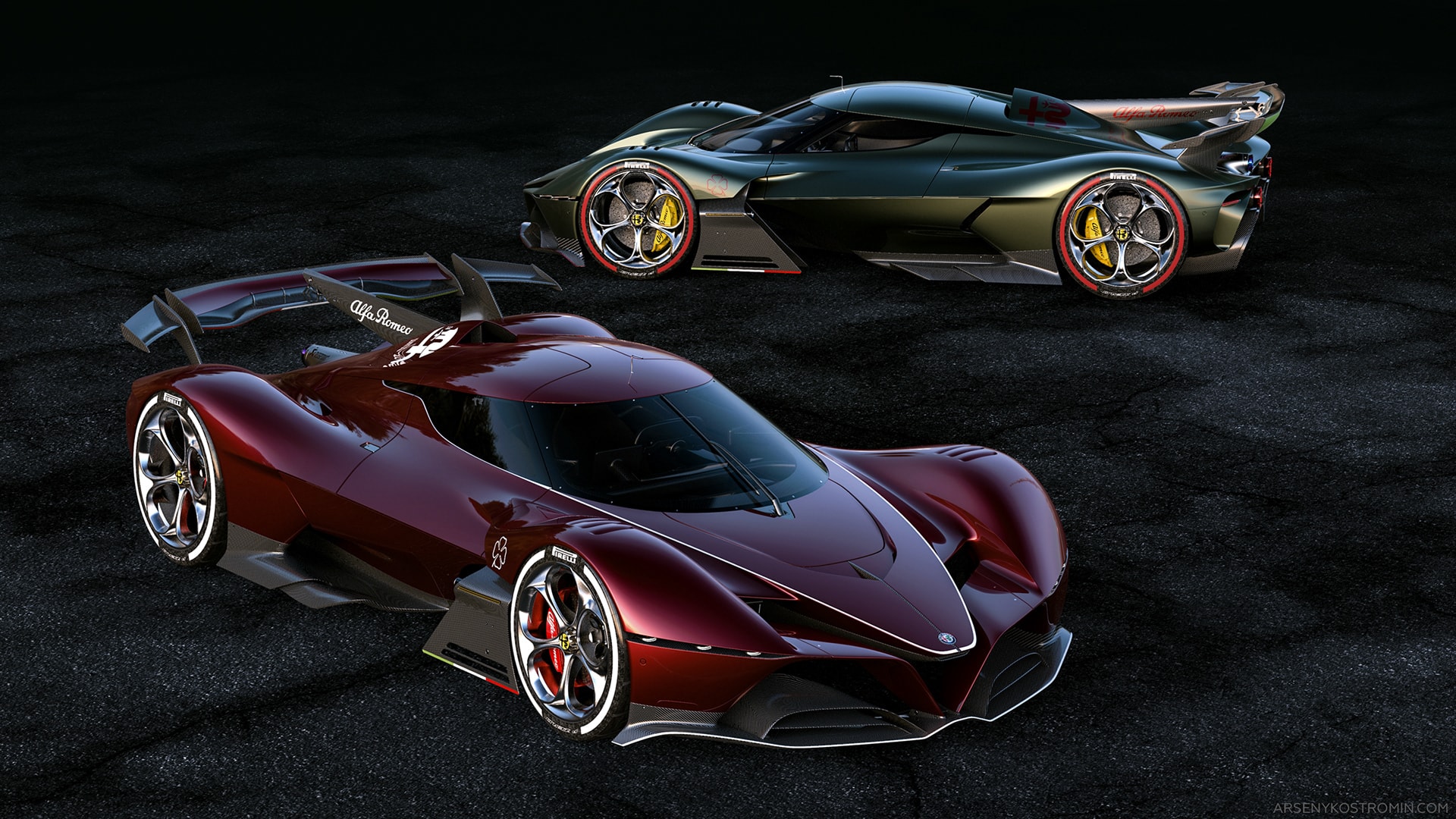
Designer Arseny Kostromin stands in the pantheon of modern auteur-designers: one man sketching lines that cause shivers, one mind deciding how air flows off the bonnet and into the wheelarches. The hero here is less a driver and more the creative genius behind the concept. The “moment” that catches my imagination: that first render, published in early 2020, where fans everywhere paused, exhaled, and thought: “Could this be a new Alfa legend?” And there’s the virtual world’s embrace: stylists and modelling studios creating 3D assets of the car (see Sketchfab) as though it already existed on the tarmac.
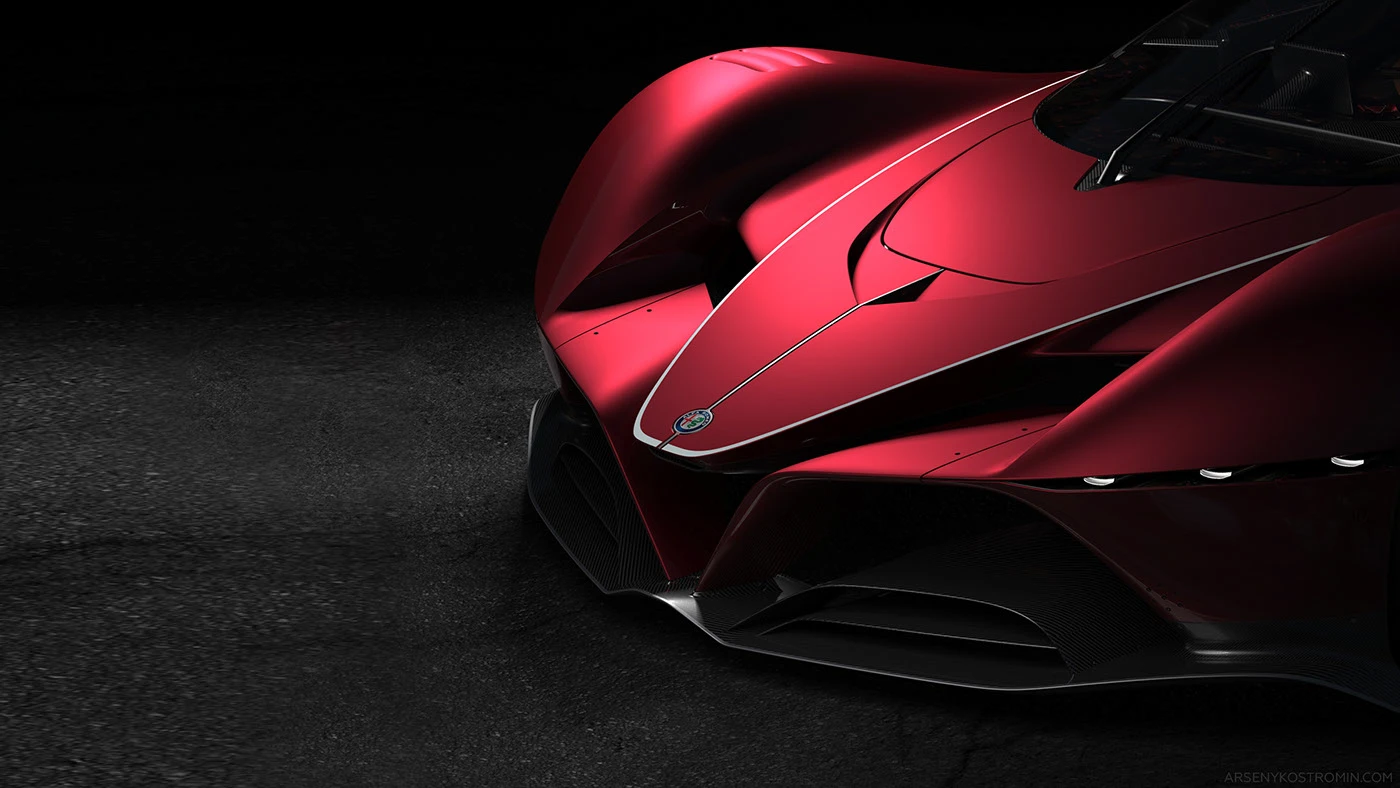
While no official grand-prix lap times exist, the mythic potential is the hero’s arc: designer imagines top-tier hypercar, name evokes legendary driver, brand engages heritage, the world responds. That’s the moment.
Underneath those breathtaking surfaces is a car that borrows cues from modern hypercar engineering while remaining utterly Alfa. The concept reportedly features a naturally aspirated V12 engine architecture, inserted directly into the monocoque for reduced weight and enhanced dynamics. Rear-wheel-drive, long nose, short rear deck, mid-front engine layout (or front-mid) are all implied.
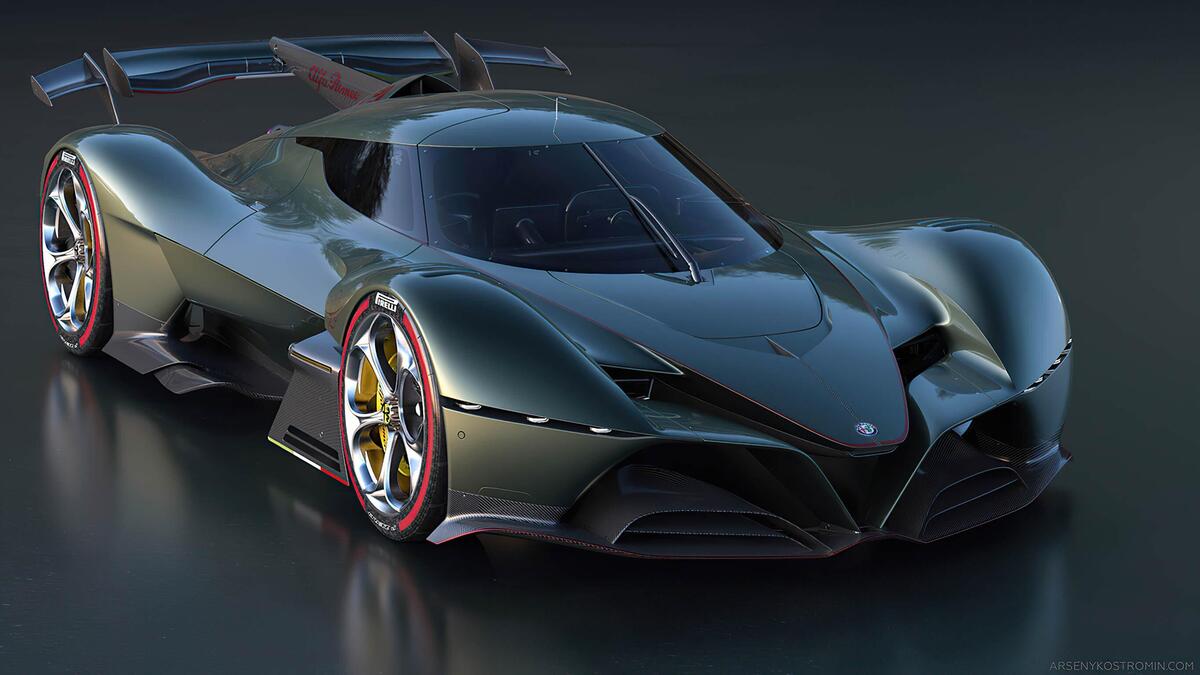
The body style is aggressive: massive carbon-fibre arches, sculpted side vents, a low “wolf-hunting” roofline. The front features the iconic Alfa “Trilobo” grille but elongated, stretched, modernised. The interior (in renders) pairs Alcantara and exposed carbon, racing seats, minimalist instrument cluster—purist to the core. Dimensions are not officially published in detail (because it’s a concept), but you mentally slot it alongside other 2010s hypercar architecture: sub-1300kg dry weight ambition, double wishbone suspension, active aero perhaps, ceramic brakes behind aerodynamic wheels.
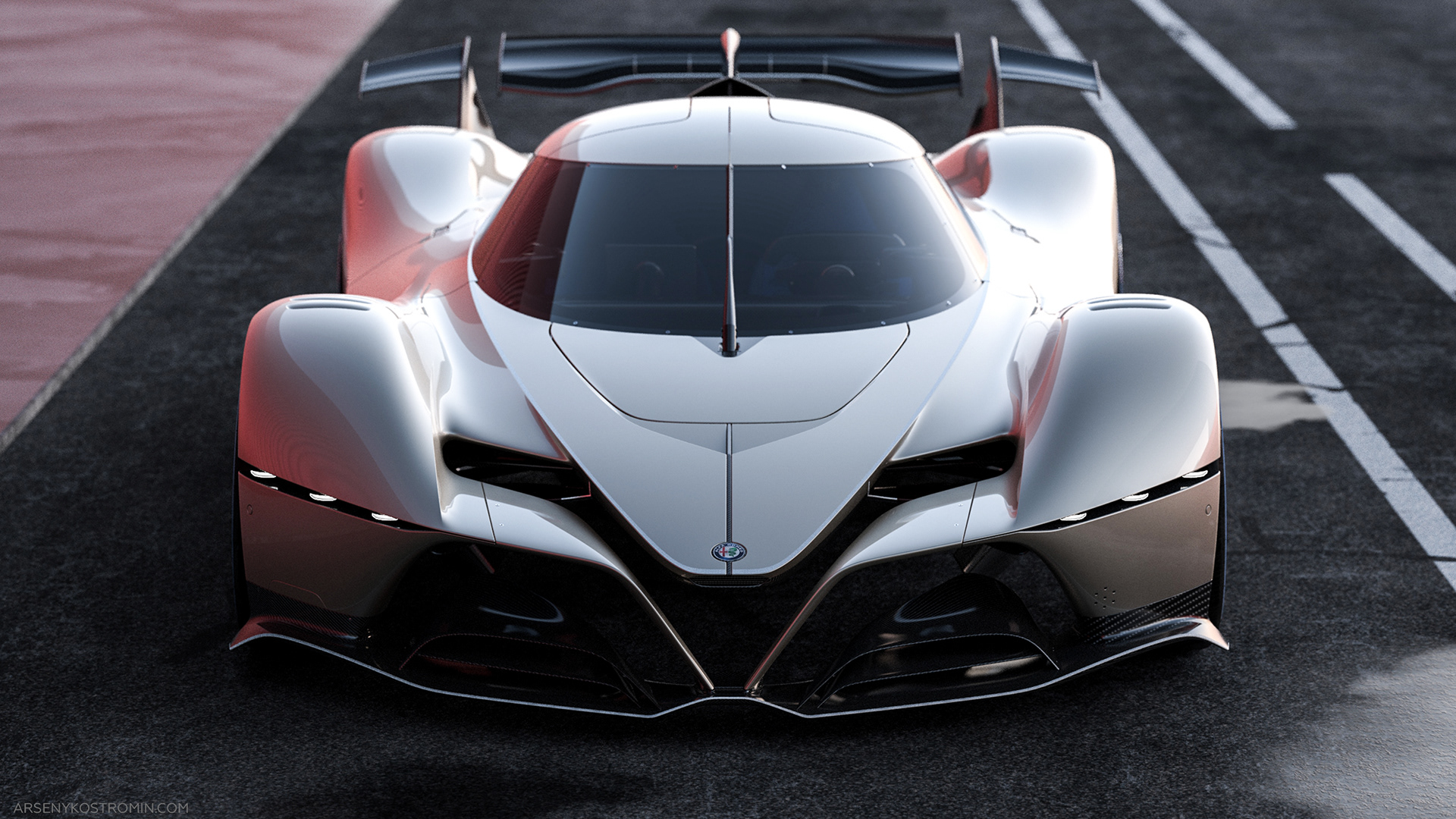
This is no “fast convertible GT” — this is track-bred aesthetic, street-legal dream. In the design you see engineers drawing references to the past: the “8C” heritage, the craftsmanship, aluminium body-in-white, but translated into a 21st-century hypercar. The project ethos: “What if Alfa Romeo built a modern halo car that could also race?” And the answer is Tazio.
Given that the 8C-R Tazio is a concept rather than a production vehicle, its role isn’t “owner-track days” or “official factory racing” but rather a signalling device for the brand. Within the modern automotive era—where electrification, regulation, and brand reinvention dominate—Alfa Romeo needs a halo. Tazio gives them that.

Though there are no road-going examples sold broadly, the concept surfaces in design forums, game-modelling circles (e.g., the 3D model on Sketchfab). It functions as a benchmark inside Alfa and among fans: “If we ever make a flagship hypercar, this is the shape it will take.” The atmosphere around it is one of longing rather than fulfilment — enthusiasts analysing proportions, debating what drivetrain it truly uses, whether hybrid or purely ICE, speculating on production viability.
The world is at a pivot: hypercars must now contend with emissions, electrification and regulatory pressure. For Alfa, the Tazio concept offers a nostalgic yet forward-looking bridge: heritage meets high tech. The public get glimpses, designers reference it in portfolios, modders add it to games. It’s become part of the modern cultural conversation around automotive brand rebirth.
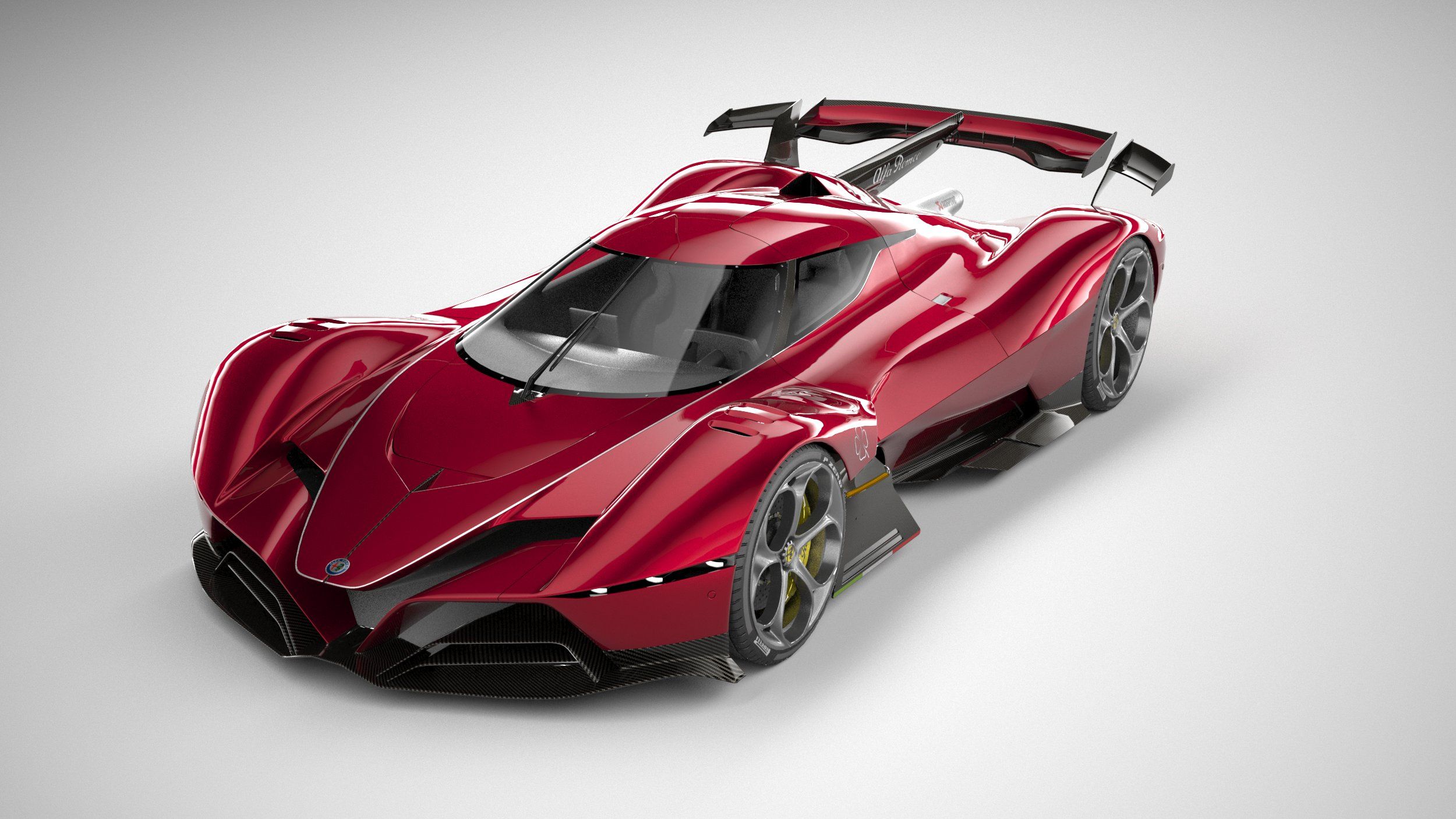
So why does the 8C-R Tazio matter? Because in a world where many brands build “me too” supercars, here is one that says: “We invented emotion. We raced before most of you were born. We still can.” Its legend is not in lap times or production numbers but in its audacious ambition and symbolic import. It signals a brand reclaiming its identity. It connects Nuvolari’s daring pirouettes in the 1930s to digital renders in 2020. It offers hope that classic marques can still dream big.

For collectors, designers, fans of marques and machines, Tazio is the “what-could-have-been” shining in polished carbon. It is the ghost-car of a brand pushing to redefine itself. And because it is unrealised (or only partially realised), it retains mystique: you never quite “drive” one, you imagine one—still future-perfect.
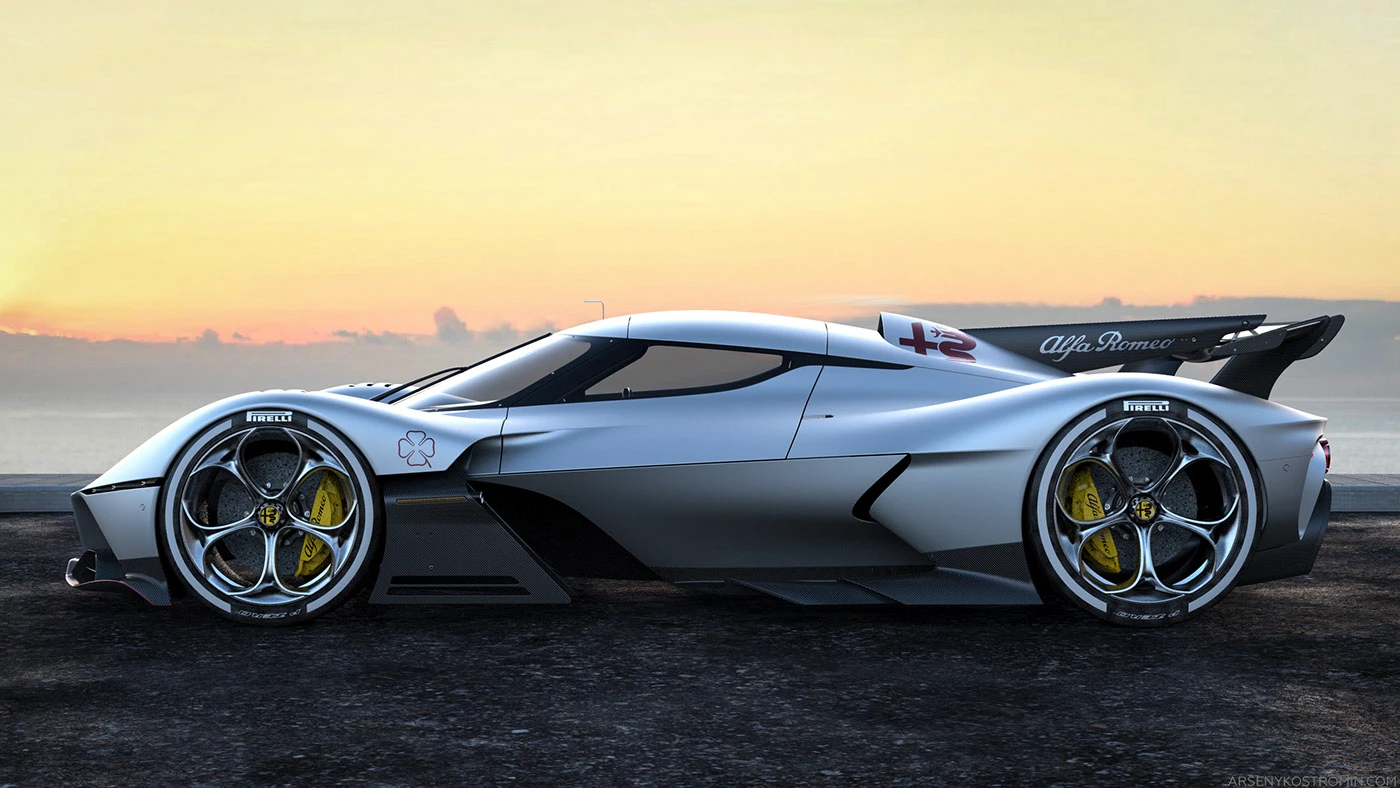
In the end, that’s why the 8C-R Tazio remains a legend: because it captures the emotion of speed, the romance of heritage, the cold brilliance of modern engineering—and binds them all in a single vision. And in the automotive world, visions matter just as much as machines.
-